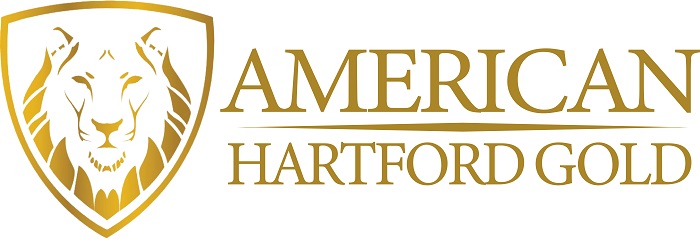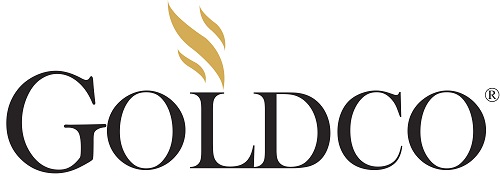Last Updated on February 15, 2024 by Ben
What Does Elective Deferrals to 401 k Mean
What Do Elective Deferrals to 401 k Mean? Elective deferrals are contributions that employees make to their 401k plans. These contributions are made on a voluntary basis and can be changed or stopped at any time. The money contributed to a 401k plan is not taxed until it is withdrawn from the account. This makes elective deferrals a popular way for employees to save for retirement.
What is an Elective-Deferral Contribution?
An elective-deferral contribution is when an employee decides to put money directly from their salary into their employer-sponsored retirement plan, like a 403(b) or 401(k) plan. They have to authorize the transaction first before the contribution can be deducted.
There are two types of elective deferrals an employee can make to a qualified retirement plan: pre-tax and after-tax. The IRS sets limits on how much an employee can defer or contribute each year. An elective-deferral contribution is when you choose to put money aside from your paycheck before taxes are taken out. This is also called a salary-deferral or salary-reduction contribution.
How an Elective-Deferral Contribution Works
Elective-deferral contributions you make to a traditional 401(k) plan are made before income taxes are taken out. This effectively reduces an employee’s taxable income. Assume a person making $40,000 per year contributes $100 each month into their 401(k). The total of the deferrals is $1,200 per year. This means that the employee’s pay is taxed at $38,800 instead of $40,000 that year.
When you withdraw out of your retirement plan, you will be taxed at the income tax rate of the person taking the money out. There are a few rules about when you can take the money out and how much you can take out. For example, if you take out money from your 401k before you are 59 and a half, you might have to pay an extra 10% tax. State and local taxes may also be charged.
Roth 401(k) plans are employer-sponsored retirement plans in which contributions are made on an after-tax basis. This means that the funds are taxed before they are deposited into the plan. Roth 401(k)s don’t have a pre-tax benefit. That means that if you take out money that you put in, you won’t have to pay taxes on it as long as you’re over the age of 59½.
Tax Benefits of Elective Deferral Contributions
Elective deferral contributions allow you to delay paying taxes on income and investment gains. Employer-sponsored plans, including 403(b)s and 401(k)s, can be funded with pre-tax money through an elective deferral. This is when an employer withdraws money directly from an employee’s paycheck and deposits it in a retirement account without having to pay income taxes on that money.
When someone chooses to contribute money to a 401(k) account, their taxable income for the year is reduced. For example, if someone earns $100,000 in a year and chooses to contribute $10,000 to their 401(k) account, their taxable income is reduced to $90,000.
Pre-Tax vs. Post-Tax Contributions
There are two types of retirement plans: pre-tax accounts and post-tax accounts. Pre-tax contributions may help you save money in taxes throughout your career, while post-tax contributions can help you save money after retiring.
➤ Pre-Tax Contributions
A pre-tax contribution is when you put money into a retirement account before taxes are taken out. This means you will pay fewer taxes on the money you contribute. Employers may also offer to match your contributions, which is a great way to save for retirement. A pre-tax account is also called a “tax-deferred” account. This means that you don’t have to pay taxes on the money you put into the account or on any profits it makes until you take the money out of the account in the future.
When you retire, you will be in a lower tax bracket than when you are working. This means that you will have to pay fewer taxes on the money in your retirement account. You can do this by delaying taxes on the money in the account.
➤ Post-Tax Contributions
Post-tax contributions are contributions to investment or retirement accounts (Roth IRA) that you make after you have paid taxes on the money. This means that the contributions won’t be taxed again when you take the money out in the future. The money you save for retirement is not tax-deductible, but it will be tax-free when you retire and take the money out. This can help reduce your taxable income.
When you take money out of an investment that you made with after-tax money, you will have to pay taxes on the gain above what you originally paid. The quantity of tax you have to pay depends on how long you hold the investment. The longer you hold it, the more commending the tax situation will be.
Long-term investments can provide you with returns in the form of qualified dividends and capital gains. This kind of investment income is subject to a lower tax rate, and in some cases, long-term capital gains may not be taxed at all.
Elective-Deferral Contribution Limits
The Internal Revenue Service in the United States establishes limits on how much money people can contribute to their qualified retirement plans.
- Employee Contribution Limit
In 2020 and 2021, people aged 50 or younger can contribute up to $19,500 to their retirement accounts. Or they can contribute the amount of their yearly income, whichever is less. If someone is older than 50, they can make catch-up contributions of $6,500 more for a total of $26,000.
When an employee’s combined contributions exceed the deferral limit, it is taxed as income.
- Employee and Employer Total Contribution Limit
If an employee contributes money to a retirement account, their employer might match that contribution. This matching can be done on a voluntary or mandatory basis, depending on the company’s choice.
The total amount contributed by both the employer and the employee to an employee’s retirement plan cannot exceed this sum:
- 100% of the employee’s compensation; or
- For 2020, the total contribution limit is $57,000. The limit for people aged 50 and above is $63,500. This includes a catch-up contribution of $6,500.
- For 2021, you can contribute $58,000 to a 401k or IRA account. If you’re 50 years old or older, you can contribute an extra $6,500 to make up for a lost time.
Recommended IRA Companies
Augusta Precious Metals



www.augustapreciousmetals.com



Star Rating
Augusta Precious Metals, a precious metals business, offers an analysis of the economy and how it affects individuals’ retirement. They also enable IRA account holders to feel more secure about their futures by allowing them to invest in gold and silver.
The firm is recognized for its experienced, trained representatives who can help you understand the economy and gold and silver. They’ll be able to assist you in developing a bespoke gold and silver portfolio based on your preferences, so long as you tell them about it.
American Hartford Gold



www.americanhartfordgold.com



Star Rating
The American Hartford Gold is located in Los Angeles, California. It helps people get the most value for their gold purchases. The company sells different kinds of precious metals to investors, including bullion, bars, and coins. Some people invest in precious metals IRAs to focus more on their retirement plans. Investments can help you save money for when you retire. This way, if something occurs and you lose money in the stock market, you will have other sources of income to rely on.
American Hartford Gold is a company that always tries to price its products fairly. This, together with the fact that the company has been around for a while, makes American Hartford Gold one of the safer companies to work with. Some new organizations might not be as careful about their advertising and might not be as safe to work with.
Goldco



www.goldco.com



Star Rating
Goldco lets you keep your retirement assets safe by moving them into a gold or silver IRA. Goldco is good at helping people with their IRAs. People like Goldco because it provides a high level of customer service.
The firm is proud of its client service, which includes before, during, and even after you open an account. They express their pleasure numerous times when assisting inexperienced customers throughout the process of creating a gold IRA and trading existing assets. Customers may contact in-house gold and silver experts for assistance as well.
Final Thoughts – What Does Elective Deferrals to 401 k Mean
Elective deferral contributions are a prominent way to save for retirement. Employees need to provide consent to the employer in order for these contributions to take place. Employers will administer the funds, and they offer tax advantages as well. Employees should consult a tax advisor to see if elective deferral contributions are the best option for them.
There you have it! Everything you need to know about elective deferral contributions! Be sure to consult with a tax advisor to see if this is the best option for you and your retirement savings plan.
